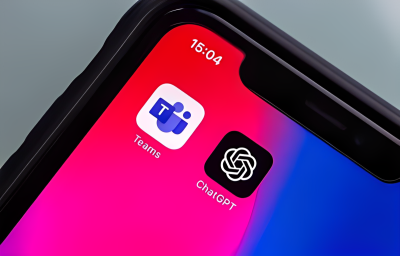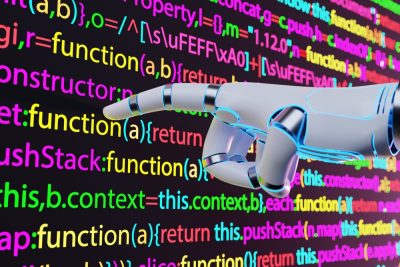In the near future, the biggest paybacks of Artificial Intelligence (AI) will certainly come from several new ways to improve business processes, rather than from one big, all-purpose algorithm. This is what Andrew Ng, one of the big pioneers of AI development at Google and Baidu, now CEO and co-founder of Landing AI, says. At the EmTech conference in San Francisco, Andrew Ng shared that he expected much of the economic growth from AI development to be outside of the traditional software industry and rather in sectors such as retail, transport and logistics. With this in mind, Landing AI – the company it founded in 2017 – has created an “AI manual” to help companies in different industries benefit from AI, a valuable technology but difficult to implement. The proof is that the majority of organizations outsource it. One of AI’s recent offerings is deep learning.
AI, a training program to make neural networks more accessible. For companies that have not started AI yet, Andrew Ng recommends starting wisely with a pilot project and preparing to be greeted with suspicion. Even at Google, Andrew Ng reveals that there were many skeptics when he started implementing Deep Learning projects. His strategy was therefore to start with a group of Googlers who were already using other AI techniques (the one in charge of cognitive computing on voice and speech recognition) to demonstrate the potential of neural networks. “One of the best things you can do is run a driver to get quick wins. It helps teams gain expertise and gain trust, “says Andrew Ng.
Here is the summary of his key tips to get your AI project off the ground.
Start with a brainstorming session. A common mistake in this type of project is to start with a first application case chosen by the CEO. On the contrary, Andrew Ng thinks that a better approach is to start with a brainstorming session that ends with six to twelve ideas. Ideas which must then be subjected to a thorough examination by the trades and the technical direction. Business departments will need to model the expected value of an idea using a spreadsheet. Technical experts evaluate whether the project is feasible in terms of algorithms and data. “It’s hard to have just judgments about what artificial intelligence can and can not do,” warns Andrew Ng. CEOs would therefore tend to be overly optimistic – partly because the scientific community and the press tell more stories of AI successes than chess. Which gives the impression – false – that the AI can do everything. Andrew Ng believes that this biased perception of corporate decision-makers has led to unrealistic expectations, such as with chatbots, many of whose projects have failed. To demystify AI, Andrew Ng worked on a program of free courses – called “AI for Everyone” – for non-technical profiles to popularize concepts. One of the themes of the courses is how to identify examples where AI can be applied and where it can not do anything. “I do not think all companies can make huge gains in the short term, but many can,” said Andrew Ng.
The program also includes tips on how to think about the type of data needed for AI to work well. Because it is not because a company has a data-lake that it is necessarily able to use its data for Machine Learning. It is also not true that having more data will always guarantee success. Andrew Ng cites the example of a healthcare company that has invested heavily to buy companies with a lot of data sets. In vain. In the end, “they have not found a way to use this data in a relevant way,” warns Andrew Ng. Another key to getting an AI project off the ground is understanding how AI systems can … fail.
One of the big challenges of machine learning is that workflows are different. As a result, AI experts are still trying to find a way to make trades understand the system conditions that can lead to failure, which in some cases can have disastrous consequences: a failed medical diagnosis or a crash. plane. For example, the press is quick to tell how a new algorithm is able to interpret medical radios more reliably than a human doctor. But Andrew Ng emphasizes that these stories often fail to mention that this AI only works on radios taken optimally (sharpness, definition, etc.) with scanners of recent generations. Physicians consistently outperform AI in pictures taken with older x-ray machines, or when the patient is taken from a different angle than the one on which the AI was trained. Conclusion, an AI may not work in the real world because trades have not put in place the right processes to deal with these “boundary” conditions, summarizes Andrew Ng. The world of traditional software has developed processes such as agility, scrum and code
journals to solve these problems. But the world of artificial intelligence is still trying to find the best way to implement comparable processes.
It is important to be attentive to the way you get your data. While large data-sets may be useful for some applications, big data for big data is meaningless, continues Andrew Ng. On the contrary, in the short term, many companies could reap more benefits from AI by building systems that work with small amounts of data: Small Data. Three new approaches are gaining momentum Most of the work on artificial intelligence has focused on developing algorithms that work with large sets of data, because it’s (relatively) easy. It is much more difficult to build algorithms that can be trained on a few hundred images and not on a few millions. For example, Andrew Ng’s team is working on artificial vision to analyze the manufacturing flaws of phone chips and these founders do not have millions of faulty chips to analyze. They are therefore working on the development of detection algorithms capable of forming on a few hundred images. We find the same problem in health, on the analysis of radios related to rare problems. “This capacity is at the forefront of AI,” says Andrew Ng. Companies that will be able to launch projects on Small Data will certainly be in a better position than their competitors, who will rely exclusively on larger, more expensive data sets.
For Andrew Ng, internet advertising profiling is certainly not the most disruptive AI application, but it is one that has an easily measurable ROI. The AI ROI may be more difficult to measure in other cases. Andrew Ng advocates taking into account a variety of indicators such as cost reduction, value creation through new commercial offerings, or measuring income trends in units that adopt AI. However, we must be aware that following these critical business indicators will not be easy. For example, if the AI improves the user experience (with a chatbot or the like), it may be difficult to relate this improvement to a higher income, because this increase can be attributed to a mix of factors ( seasonality, etc.). Andrew Ng does not really believe in the real potential of cutting-edge AI research – such as the use of quantum computing or the advent of generic artificial intelligence, which for him could happen in 500-500,000 years. In contrast to these big projects, he sees a lot of specific real cases where artificial intelligence – as limited as it may be – could have a major influence in a year or two. It is on these cases that he decides today to concentrate. “There is only one thing that is better than an AI project with huge potential in the long run, it’s an AI project with a lot of potential in the short term,” he says, “and today, there are many. ” In the short term, Andrew Ng suggests to each company to start a small project, with two or three engineers, rather than launching a big ten-year plan. “This will allow your organization to see what it’s like to do AI, and build momentum.”














